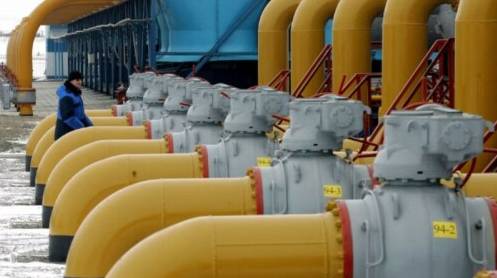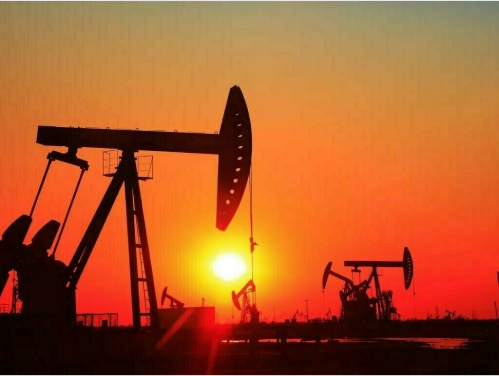Heatwaves this summer and expected natural gas shortages this winter are driving gas prices higher and higher.
Europe’s benchmark gas prices surged by 14% in just three days to a fresh record-high, continuing the upward trend from recent weeks, as gas demand for power generation is high amid heatwaves and Russian pipeline supply remains at low levels, while the EU scrambles to fill gas storage ahead of the winter that would see energy and gas rationing, industries shutting down production, and households paying sky-high prices for heating and electricity.
Europe is in the most precarious position, but natural gas prices are rallying in the United States and Asia, too. Gas demand for power is high, and production is flat in America, while major Asian buyers are back on the LNG market to secure supplies for the winter.
As LNG is now a global commodity, benchmark gas and spot LNG prices are soaring all over the world. And they could jump even higher when the heating season approaches.
Europe’s Gas Price Is Now Equivalent To $410 A Barrel Oil
Europe’s benchmark gas prices at the Dutch TTF hub rallied 14% between Monday and Wednesday, jumping by 6% on Wednesday at a new record of $240 (236 euro) per megawatt-hour. Gas prices have already doubled since June, when Russia first reduced supply via Nord Stream, the key pipeline carrying gas to Europe’s biggest economy, Germany.
The European gas benchmark now trades at what would be an equivalent of $410 per barrel of crude oil, which highlights “the debilitating economic impact on the region,” Ole Hansen, Head of Commodity Strategy at Saxo Bank, said this week.
Such record gas prices are hitting industries in Germany and the rest of Europe, with companies announcing production halts or curtailments “until further notice” amid soaring energy costs. Industries have warned that reduced production and operations could lead to a collapse of supply and production chains. Governments are scrambling to secure enough gas for the winter while walking a tight rope between alleviating the cost burdens on households and avoiding an industrial collapse and a wave of bankrupt energy companies.
As a result of the gas crunch and a heatwave constraining supply and output from other fuel sources, year-ahead electricity prices continue to soar in Europe, with German power prices, the European benchmark, jumping to over $508 (500 euro) per megawatt-hour on Tuesday—a new record.
Despite faster storage builds than usual, Germany will only have enough natural gas to cover two and a half months of consumption this winter if Russia completely suspends deliveries, Klaus Müller, the president of Germany’s energy regulator, told Bloomberg this week.
“The burden of high gas and oil prices will actually mean that we are going to see some steep contraction in the European economies next year,” Amrita Sen, director of research at Energy Aspects, told Bloomberg on Wednesday.
European prices are at record highs and at around seven times higher than U.S. benchmark prices. But the U.S. prices at Henry Hub have surged, too, to the highest they have been in 14 years. This is the result of flattish domestic production, strong gas demand from the power sector in heatwaves, and lower than normal stocks in storage, despite the outage at the Freeport LNG export terminal, which has made available more gas for domestic consumption. The Freeport LNG outage prompted a 39% decline in Henry Hub prices in June. But in July, higher-than-normal temperatures across much of the U.S. resulted in strong gas demand in the power sector, which absorbed much of the Freeport LNG-related surplus and kept natural gas inventories from rising faster, the EIA said last week. Moreover, natural gas price volatility reached an all-time high in Q1 2022, the EIA noted.
Related: Erdogan To Meet With Putin: “We Don’t Want Another Chernobyl”
Working natural gas stocks are 12% lower than the five-year average and 10% lower than last year at this time, according to the EIA.
After a slump in early June due to the Freeport LNG force majeure, U.S. benchmark gas prices have rallied by 70% since the end of June, hitting this week their highest level since August 2008 at above $9.30 per million British thermal units (MMBtu). The European benchmark price in MMBtu equivalents is now nearly $70/MMBtu – roughly seven times higher than American benchmark prices. This wide price differential is expected to pull more LNG exports out of America to Europe, which are already at record highs as the EU looks to replace as much Russian pipeline gas as possible.
Asian utilities are also back on the market to procure fuel for the winter, traders tell Bloomberg. Higher demand in northeast Asia sent spot LNG prices rallying to nearly $60/MMBtu—the highest level since the beginning of March when the Russian invasion of Ukraine drove up northeast Asian prices to a record high of over $80/MMBtu.
With winter approaching, natural gas prices could see further upside as Russian supply remains low, LNG demand rises, and American producers are not rushing to ramp up production.
Eventually, the high prices could spur a response from U.S. shale gas drillers on the supply side, while on the demand side, record prices could accelerate the destruction of demand and sink European economies.





